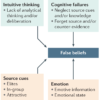In theory, competition among ride-hailing companies should be a good thing, providing more options for consumers. In practice, having too many ride-hailing vehicles adds to urban congestion. How can cities balance these factors?
A new study co-authored by MIT researchers, in collaboration with the Institute for Informatics and Telematics of the National Research Council of Italy, provides a model that shows the extent to which ride-sharing competition clogs the streets—allowing analysts and policymakers to estimate how many vehicles and firms might form an optimally-sized market in a given metro area.
“What this shows is that by not coordinating ride-hailing companies, we are creating a huge amount of additional traffic,” says Carlo Ratti, a professor in MIT’s Department of Urban Studies and Planning (DUSP) and co-author of a new paper detailing the study’s results. “If cities were to use a platform to coordinate ride-hailing, we could reduce overall congestion and traffic in cities all over the world.”
The paper, “The cost of non-cordination in urban on-demand mobility,” is published today in Nature Scientific Reports.
The authors are Daniel Kondor, a researcher with the Singapore-MIT Alliance for Research and Technology (SMART); Iva Bojic, a researcher with SMART; Giovanni Resta, a researcher at the Institute for Informatics and Telematics of the National Research Council of Italy; Fabio Duarte, a lecturer in DUSP and principal research scientist at MIT’s Senseable City Lab; Paolo Santi, a principal research scientist at the Senseable City Lab and research director at the Institute for Informatics and Telematics of the National Research Council of Italy; and Ratti, who is a professor of urban technologies and planning in DUSP and the director of the Senseable City Lab.
Measuring the cost in terms of traffic
To conduct the study, the research team obtained anonymized taxi data, as a way of determining where people request rides from, for five cities: Curitiba (in Brazil), New York (for Manhattan only), San Francisco, Singapore, and Vienna. The number of trips recorded ranged from 300,000 in Vienna to 150 million in New York.
Using those data as a proxy for all ride-hailing demand, the researchers then modeled the flow of traffic needed to pick up all the passengers with optimal efficiency, as well as scenarios in which multiple firms competed independently of one another. This approach allowed the team to isolate the effects of adding new ride-hailing firms to a given market.
Ultimately, the scholars found that adding a standard-sized ride-hailing firm to the market had varying effects on the number of vehicles that would be deployed in an attempt to meet demand. In Manhattan, a new competitor entering the market would only increase the quantity of ride-providing vehicles by about 3 percent. In Singapore, that figure is 8 percent, and in Curitiba, it is 67 percent. This is what the researchers call the “cost of noncoordination” in the industry.
“We think it’s positive to have multiple providers,” says Santi. “But if they are not coordinated, there is a price to pay, so to speak.”
Ratti adds: “If you allow everyone to optimize independently, it generates extra congestion. You don’t get the closest car—you might get an Uber car which is farther away, although maybe there’s a Lyft car next to you.”
The biggest factors affecting the number of vehicles needed are the density of passenger demand and the average traffic speed. In Manhattan, with customers situated closer together, adding a new company to the market will not drastically change the amount of vehicles being deployed to pick up all the customers in the borough. In Curitiba, where passengers are more spread out, a new ride-hailing company operating on its own would lead to a much bigger proportion of new vehicles on the road.
“If there is very dense demand, even if you do not coordinate, you still have a good pool of vehicles to draw from [nearby], and efficiency is still pretty good,” Santi observes. “If you are in a city without that density of demand, noncoordination costs a lot. The other factor is the speed of traffic. In a noncoordinated market, you might require a vehicle that is further away. If the traffic speed is high, that might be okay, but if the traffic speed is low, it might be very inefficient to serve that customer.”
Many firms, one platform?
Ratti, Santi, and their colleagues say the results strongly point to the policy of having one main ride-sharing platform for consumers in a given city, which all competing firms could use. That could enhance efficiency even as market competition still exists.
“Certainly this doesn’t mean arguing for less competition,” Ratti says. “We can combine competition and efficiency by using a common platform. It’s just a matter of regulation by the cities. And these are heavily regulated markets, so we’re not arguing for anything new.”
And as Santi points out, “These kinds of digital platforms already exist in many U.S. cities for micromobility,” that is, bike-sharing services. “That’s a model that could also work for on-demand mobility like Uber and Lyft.”
Whether metropolitan areas will move in that direction remains to be seen. Still, the modeling in the paper at least provides a tool any city’s experts could use to keep refining their mobility and traffic policies.
More information:
Dániel Kondor et al, The cost of non-coordination in urban on-demand mobility, Scientific Reports (2022). DOI: 10.1038/s41598-022-08427-2
Provided by
Massachusetts Institute of Technology
Citation:
Study suggests how much competition in the urban ride market can grow before gridlock sets in (2022, March 22)



